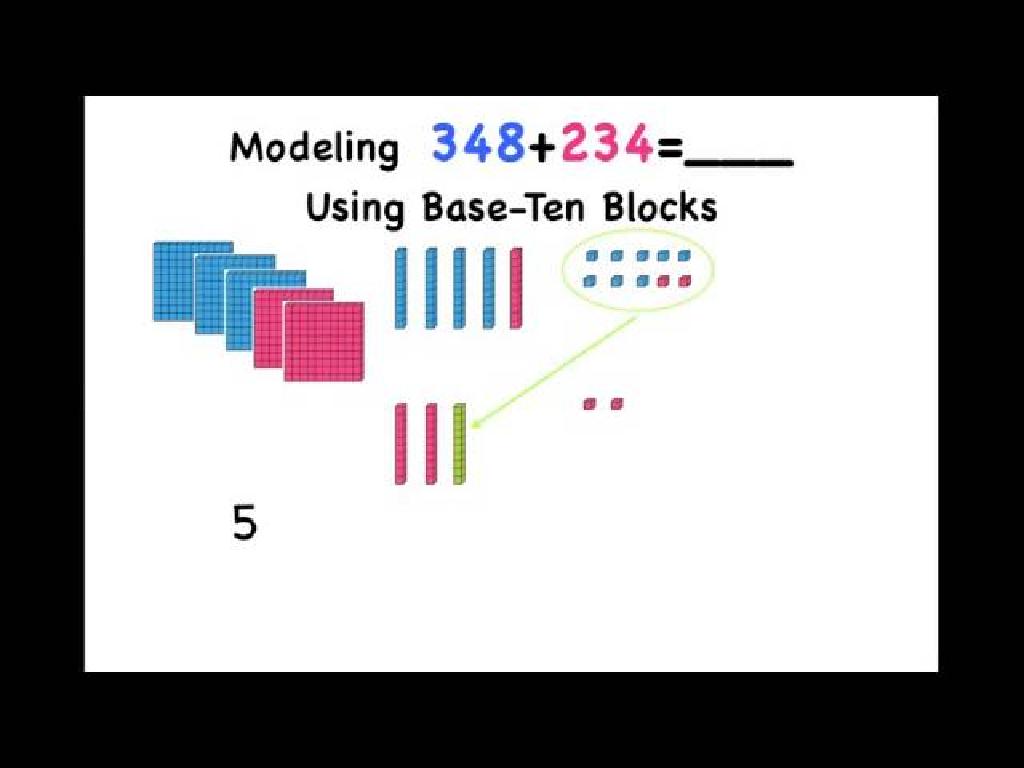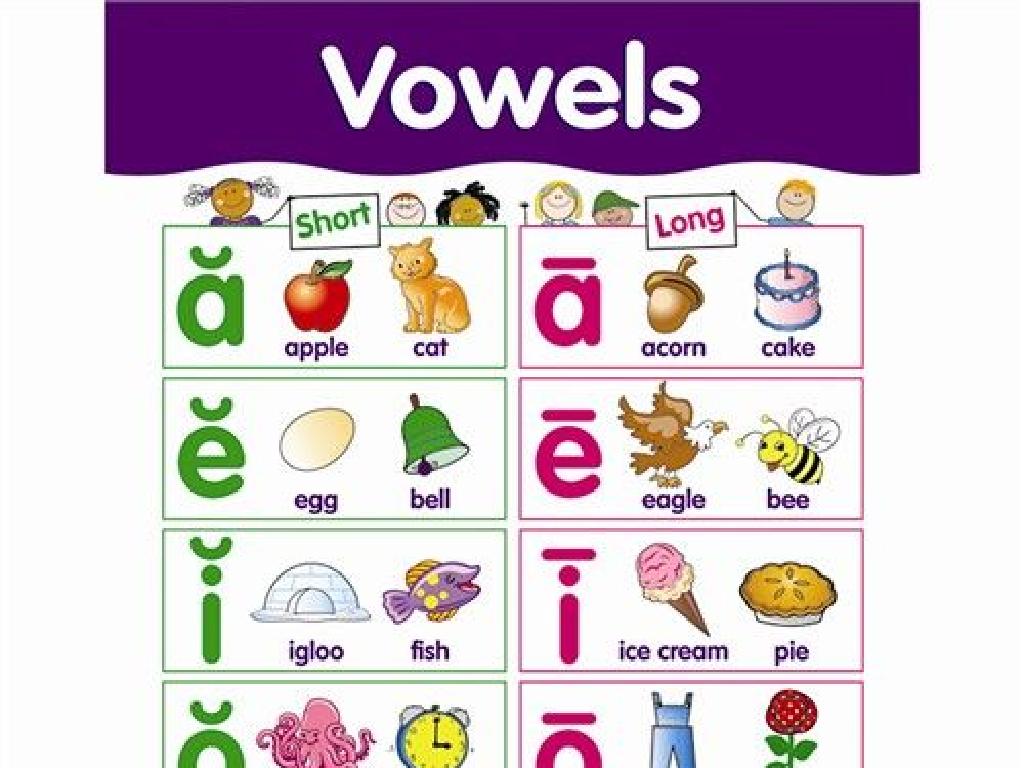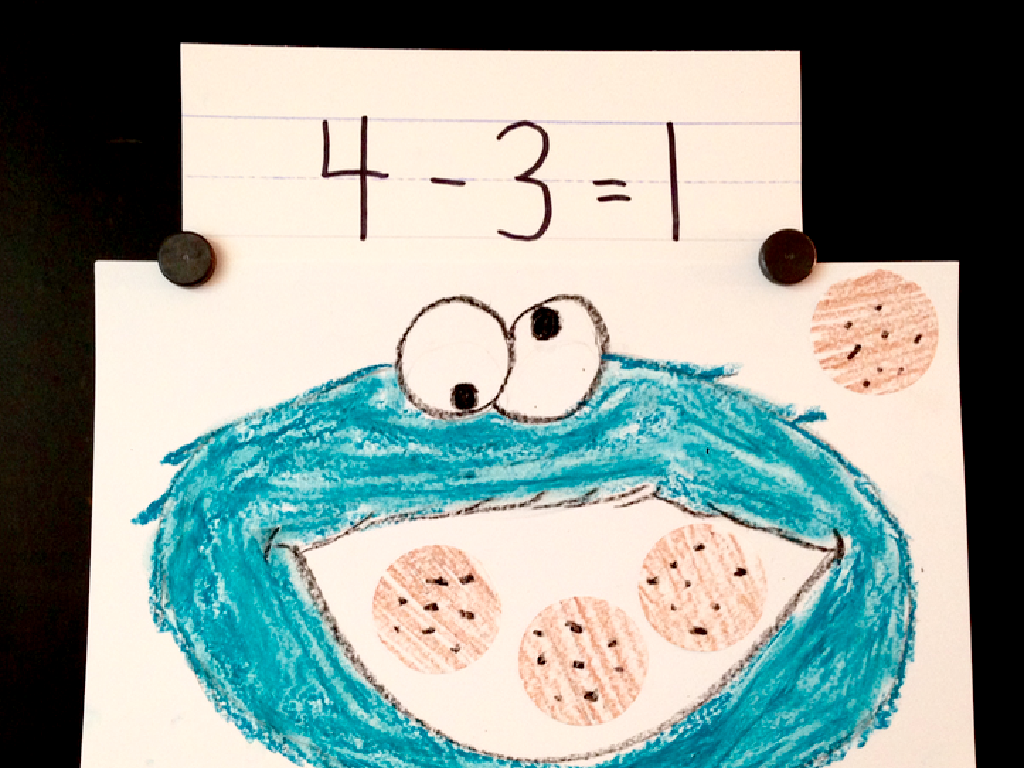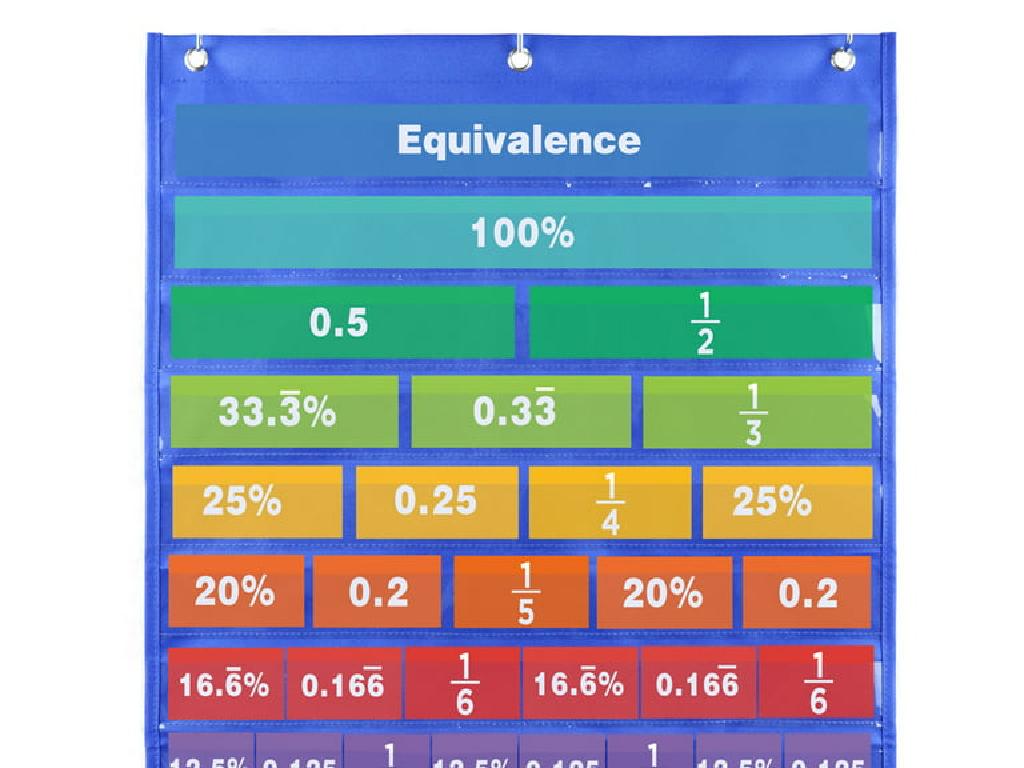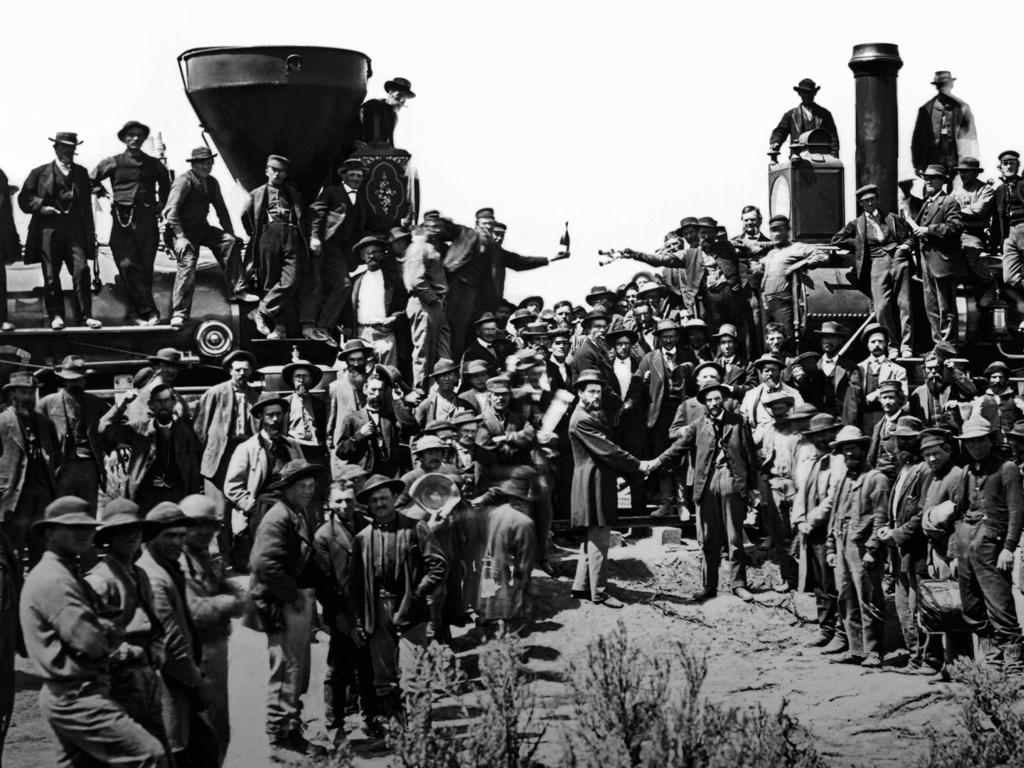Interpret Figures Of Speech
Subject: Language arts
Grade: Eighth grade
Topic: Literary Devices
Please LOG IN to download the presentation. Access is available to registered users only.
View More Content
Exploring Figures of Speech
– Figures of speech enhance writing
– Metaphors, similes, personification add depth
– Authors express ideas creatively
– Creative expression makes text vivid
– Today’s focus: Figures of Speech
– Learn similes, metaphors, hyperbole, etc.
– Engage with language’s beauty
– Recognize and appreciate language artistry
|
This slide introduces students to the concept of figures of speech as a key element of literary devices. Figures of speech, such as metaphors, similes, and personification, allow authors to convey their messages in more engaging and impactful ways. By using creative language, writers can paint vivid images in the reader’s mind and express complex ideas more effectively. Today’s lesson will focus on identifying and understanding various figures of speech, with the goal of enhancing the students’ appreciation for the artistry of language. Encourage students to think about their favorite books or songs and how figures of speech contribute to their meaning and beauty.
Exploring Figures of Speech
– Define Figures of Speech
– Expressive language used for effect rather than literal meaning
– Purpose in Literature
– Authors use them to convey emotions, visualize ideas, or emphasize points
– Examples of Figures of Speech
– Metaphors, similes, personification, hyperbole are a few types
– Impact on Reader’s Experience
– They enhance the text, making it more engaging and memorable
|
This slide introduces the concept of figures of speech, which are a key element of literary devices. They are not meant to be taken literally but are used by authors to create a particular effect, convey complex ideas, or add beauty to their writing. By using figures of speech, authors can connect with their readers on an emotional level, help them visualize scenes, or highlight certain points. Examples like metaphors, which compare two things without using ‘like’ or ‘as’, and similes, which do use ‘like’ or ‘as’, illustrate this concept. Personification gives human qualities to non-human things, and hyperbole is an extreme exaggeration. These tools are essential for students to recognize and understand to fully appreciate and analyze literature. Encourage students to find examples of figures of speech in their favorite books or poems and consider how they affect their reading experience.
Similes and Metaphors in Literature
– Understanding similes
– Similes compare two things using ‘like’ or ‘as’, e.g., ‘as brave as a lion’.
– Exploring metaphors
– Metaphors make direct comparisons, e.g., ‘He is a shining star’.
– Identifying similes and metaphors
– Find and explain similes and metaphors in provided sentences.
– Practice with examples
– We’ll analyze examples together in class for better understanding.
|
This slide introduces students to similes and metaphors, key figures of speech in literature. Begin by explaining similes as comparisons that use ‘like’ or ‘as’ to show similarities between different things. Then, describe metaphors as direct comparisons that do not use ‘like’ or ‘as’, often implying that one thing is another to highlight shared qualities. Provide students with sentences and have them identify the figures of speech used. Encourage them to explain why a particular simile or metaphor was used and what effect it has on the meaning of the sentence. Use examples from familiar texts or create relatable comparisons to ensure students grasp the concepts. The practice activity will involve analyzing examples to reinforce their understanding.
Exploring Personification in Literature
– Defining personification
– Assigning human traits to objects or ideas
– Effectiveness in writing
– Enhances imagery and emotional connection
– Literary examples
– ‘The wind whispered through the trees’
– Analyzing personification
– Discuss how personification affects reader’s imagination
|
Personification is a literary device where human qualities are given to animals, objects, or ideas. It is an effective tool in writing because it creates vivid imagery and helps readers connect emotionally with non-human subjects. By attributing human characteristics to inanimate objects, authors can express ideas in relatable and imaginative ways. Provide examples from well-known literature, such as ‘The wind whispered through the trees,’ and encourage students to analyze how personification can add depth to a narrative. Have students identify personification in their reading and discuss its impact on their interpretation of the text.
Understanding Hyperbole in Literature
– Define hyperbole
– An exaggerated statement not meant to be taken literally, e.g., ‘I’m so hungry I could eat a horse.’
– Purpose of hyperbole in texts
– Hyperboles are used to create emphasis or humor in writing.
– Identifying hyperboles
– Look for extreme exaggeration in descriptions or statements.
– Practice with examples
|
This slide introduces the concept of hyperbole, a common figure of speech used in literature and everyday language. Hyperbole involves making an exaggerated statement to emphasize a point rather than to be taken literally. It’s a way for writers to convey strong emotions, create a lasting impression, or add a touch of humor. When teaching this slide, explain that hyperboles are not lies but deliberate exaggerations to highlight something specific. Encourage students to find hyperboles in their favorite books, songs, or movies and discuss why the author might have chosen to use hyperbole in those instances. Provide practice opportunities with sentences or paragraphs where they can identify hyperboles and discuss their effect on the message.
Exploring Onomatopoeia in Literature
– Onomatopoeia: Sound imitation words
– Words like ‘buzz’, ‘bang’, and ‘murmur’ mimic real sounds.
– Impact on reading experience
– Enhances imagery and engages readers’ senses.
– Spot onomatopoeia in comics
– Comics use words like ‘pow’, ‘wham’, ‘splat’ for action.
– Find onomatopoeia in poetry
– Poets use onomatopoeia to convey a sense of sound and rhythm.
|
Onomatopoeia refers to words that phonetically imitate the sounds they describe, such as ‘hiss’ or ‘clang’. This literary device is effective in creating a vivid reading experience by appealing to the reader’s auditory sense and enhancing the imagery of the text. Encourage students to look for examples of onomatopoeia in comic strips, where sound words often accompany visuals, and in poetry, where they contribute to the rhythm and mood of the poem. Discuss how onomatopoeia can influence the reader’s perception and understanding of the story or poem. Have students bring in their favorite comic strips or poems that contain onomatopoeia to share and analyze in class.
Exploring Oxymoron and Irony
– Understanding oxymoron
– Oxymoron: ‘bittersweet’ combines contradictory terms
– Grasping irony
– Irony: A fire station burns down
– Examples in sentences
– ‘Act naturally’ (oxymoron) and ‘The pilot had a fear of heights’ (irony)
– Analyzing literary effect
– Discuss how these devices add depth to literature
|
This slide introduces students to the concepts of oxymoron and irony, two important figures of speech in literature. An oxymoron is a figure of speech that combines two seemingly contradictory elements to create a dramatic effect. Irony, on the other hand, is when the outcome is contrary to what was expected, often used to add humor or a critical edge to writing. Provide students with clear examples to illustrate each concept. For oxymoron, use examples like ‘deafening silence’ or ‘bittersweet’. For irony, consider situational irony, such as a fire station catching fire. Encourage students to think critically about how these literary devices affect their interpretation of texts and to look for more examples in their reading.
Interpreting Figures of Speech
– Tips to spot figures of speech
– Look for comparisons, exaggerations, or non-literal expressions
– Practice with paragraph examples
– We’ll analyze paragraphs to find hidden figures of speech
– Understand metaphors and similes
– Metaphors and similes compare things in different ways
– Recognize personification and hyperbole
– Personification gives human traits to non-human things; hyperbole is extreme exaggeration
|
This slide aims to equip students with the skills to identify and interpret various figures of speech, which are tools that writers use to create imagery and express ideas in a more engaging way. Tips include looking for words or phrases that compare, exaggerate, or go beyond the literal meaning. During practice, encourage students to analyze provided paragraphs for metaphors, similes, personification, and hyperbole. Metaphors directly compare two things, while similes use ‘like’ or ‘as.’ Personification attributes human characteristics to inanimate objects, and hyperbole involves deliberate exaggeration for effect. The class activity will involve identifying these figures of speech in sample texts, fostering a deeper understanding of literary devices.
Class Activity: Literary Scavenger Hunt
– Find figures of speech in a book
– Explain the author’s choice
– Why use a metaphor over a simile? What effect does it create?
– Share your discoveries
– Reflect on the impact of the speech figures
– How do these figures enhance the story?
|
This activity is designed to engage students with literature by searching for figures of speech within their favorite books. It encourages critical thinking as they must not only identify the figures of speech but also ponder the author’s intent behind using them. Possible figures of speech include metaphors, similes, personification, hyperbole, etc. Students should consider how these literary devices add depth to the narrative, characters, or setting. For example, a metaphor might provide a more powerful comparison than a simile, or hyperbole could be used to add humor or intensity. After identifying and analyzing the figures of speech, students will share their findings, fostering a collaborative learning environment. This activity also helps students appreciate the stylistic choices authors make to convey themes and emotions more effectively.
Wrapping Up: Figures of Speech
– Recap: Figures of Speech
– Review metaphors, similes, personification, etc.
– Significance of Literary Devices
– Understanding devices enriches reading and writing
– Homework: Craft a Story
– Write a creative short story for homework
– Utilize Five Figures of Speech
– Include simile, metaphor, personification, hyperbole, and onomatopoeia
|
As we conclude today’s lesson, remind students of the various figures of speech we’ve covered, such as metaphors, similes, and personification. Emphasize how recognizing these literary devices can enhance their comprehension and appreciation of literature. For homework, students are tasked with writing a short story that incorporates at least five different figures of speech. This will encourage them to apply what they’ve learned creatively. Provide examples of each figure of speech to ensure they have a clear understanding of how to use them effectively in their writing. During the next class, be prepared to discuss some of the stories and highlight the use of figures of speech in student work.

